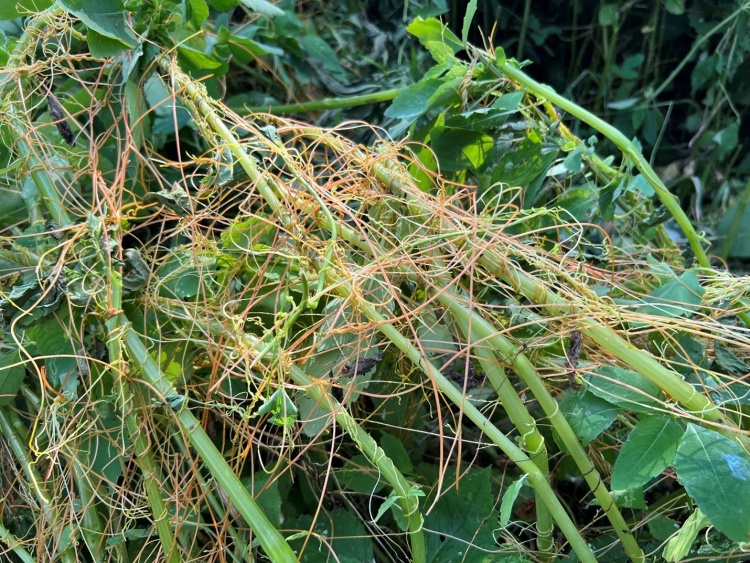
Plant of the Week: Dodder (Cuscuta)
posted
Mama-Mia, is that orange spaghetti in the prairie? No, it’s Dodder! This parasitic plant makes its living off other plants. While containing some chlorophyll, dodder does not produce enough to be self-sustaining, so it must rely on others for survival. Dodder seedlings curl around their desired host plant, entangling them in a cluster of orange stems. Once attached, dodder will develop specialized roots that penetrate the host to provide itself nutrients. As the plant grows, it makes additional connections to its host and will spread to neighboring host plants. As dodder matures, its connection to the ground is severed, relying solely on the host’s nutrients. This parasitic relationship can harm host plants as it weakens their ability to fight off infection and pests. Because dodder is a network invading multiple plants at a time, disease can also be transferred between hosts. Dodder can be difficult to identify down to a specific species, so they are commonly referred to by their genus name, dodder. There are over 100 species of dodder, with 6 being native to Wisconsin. While considered native, dodder can become invasive, especially to agricultural crops like soybeans and cranberries. Dodders are annuals that succumb to frost each year, but they produce thousands of seeds that can be viable for over 20 years. While being such a prolific and unique species, you are unlikely to find dodder in your gardens. Dodder seed transportation is regulated federally to prevent dodder from invading areas as a noxious weed.
This content is free for use with credit to City of Madison Engineering.